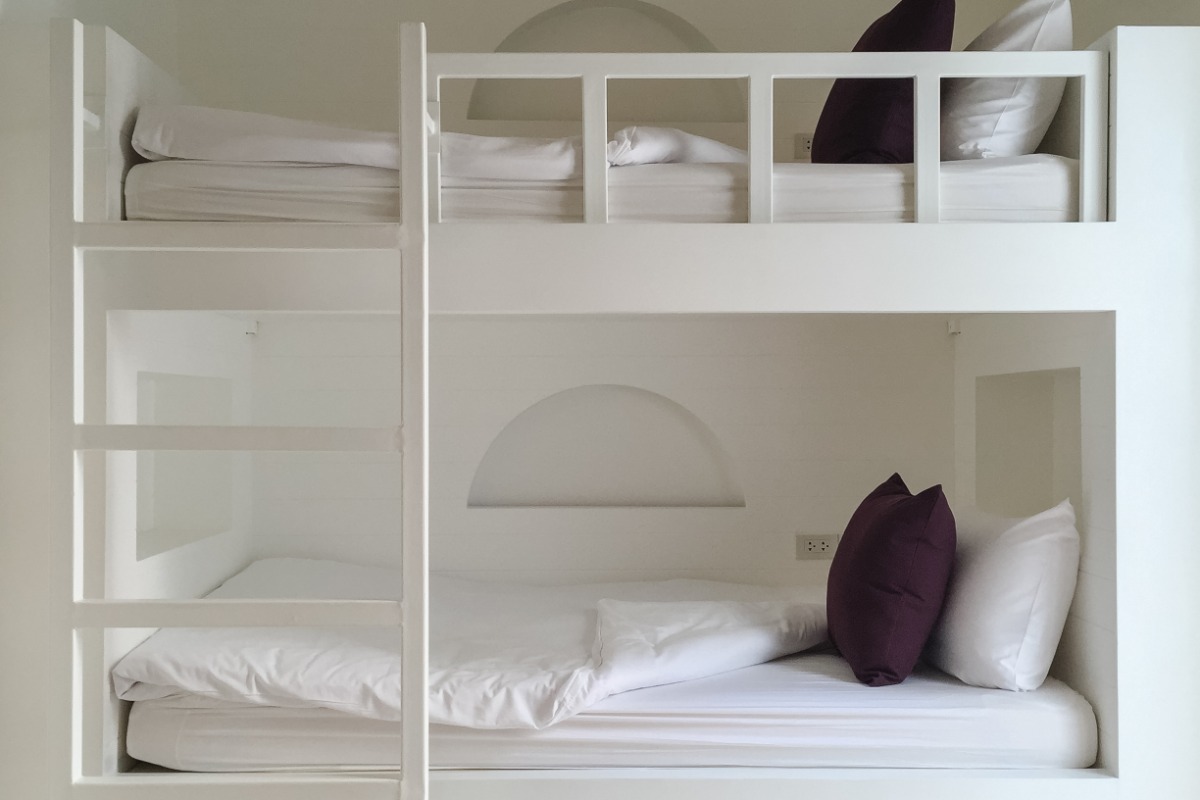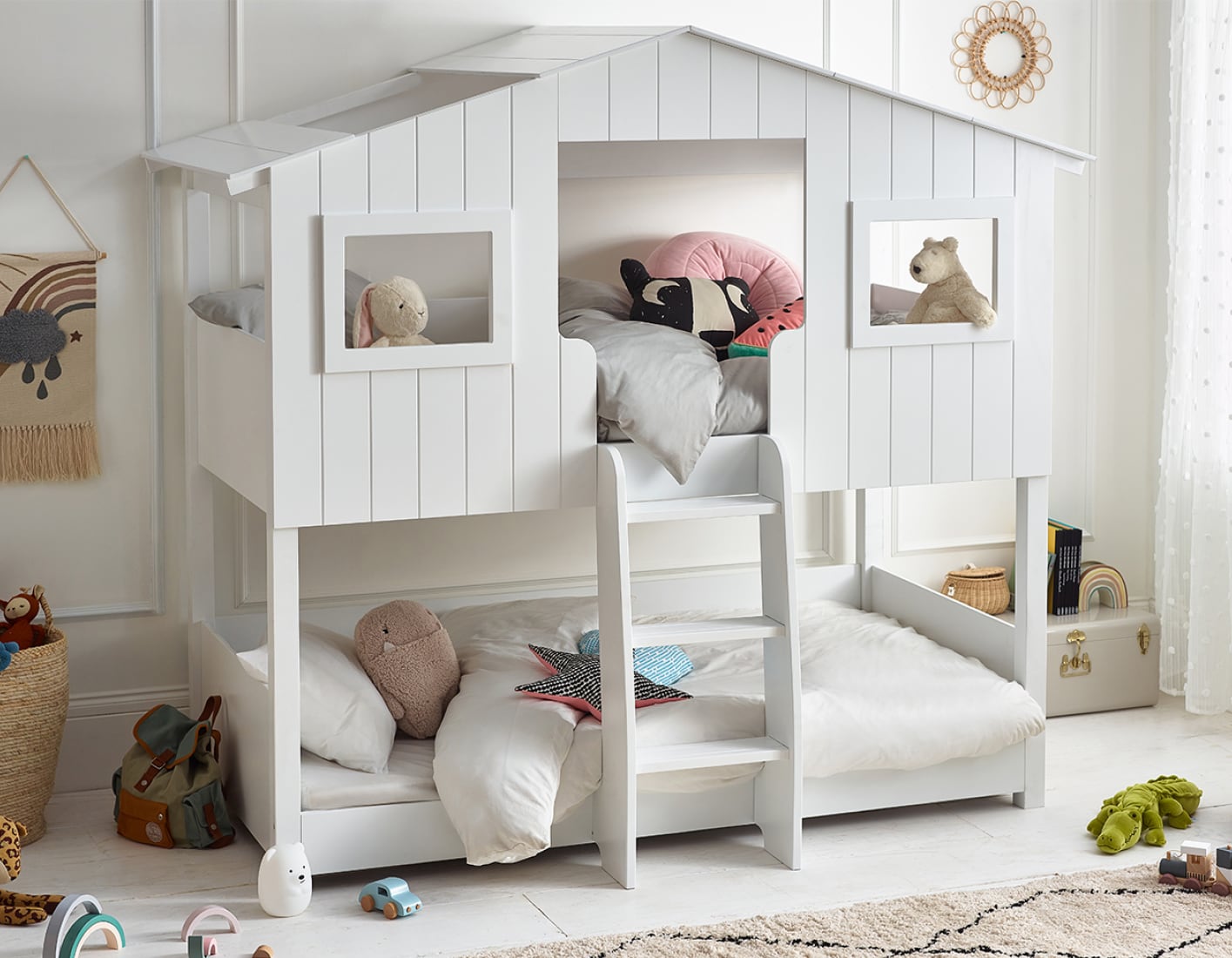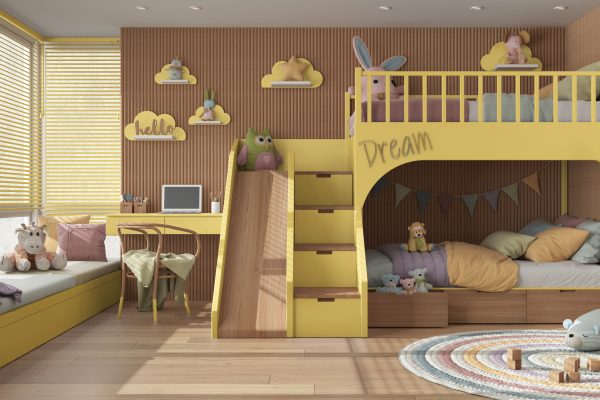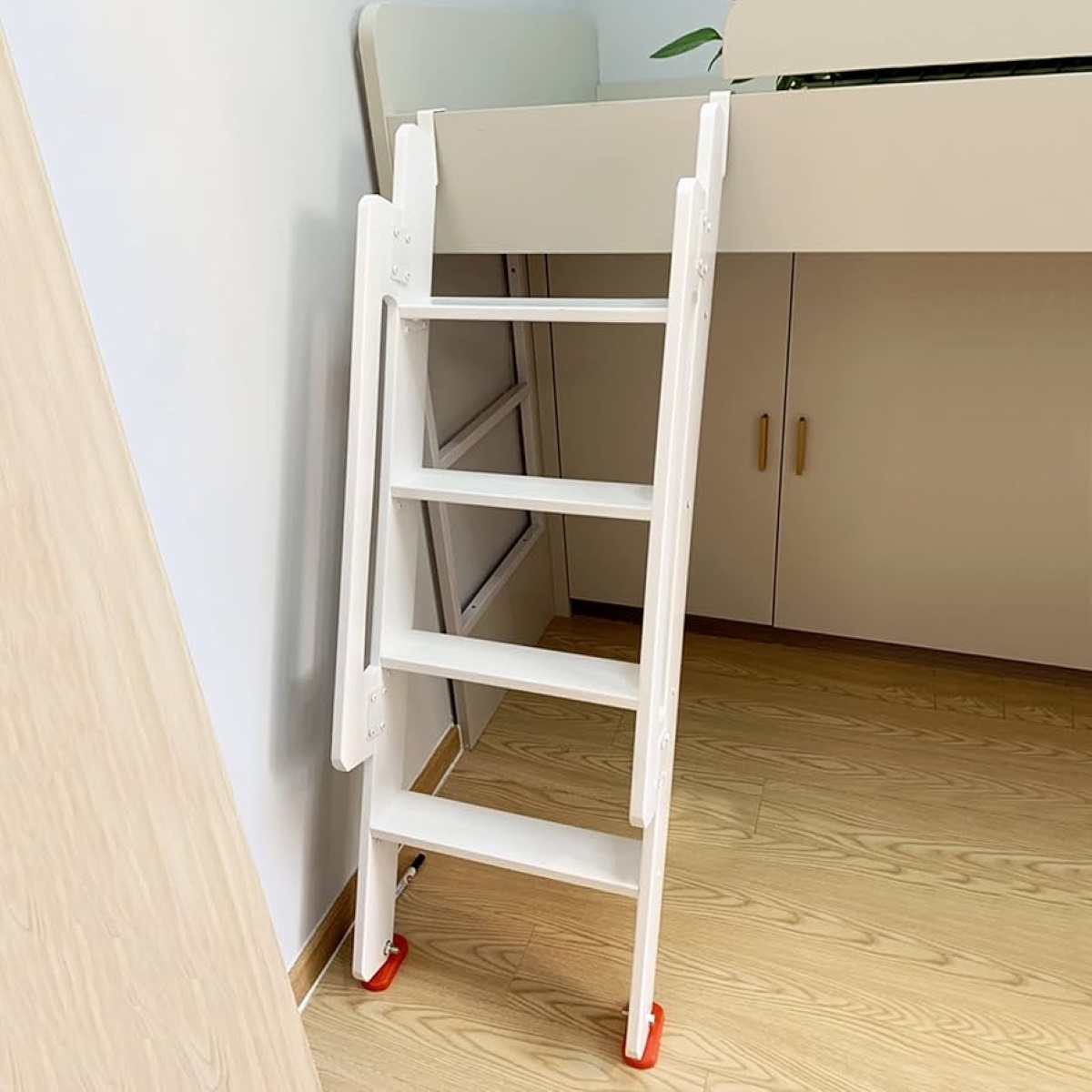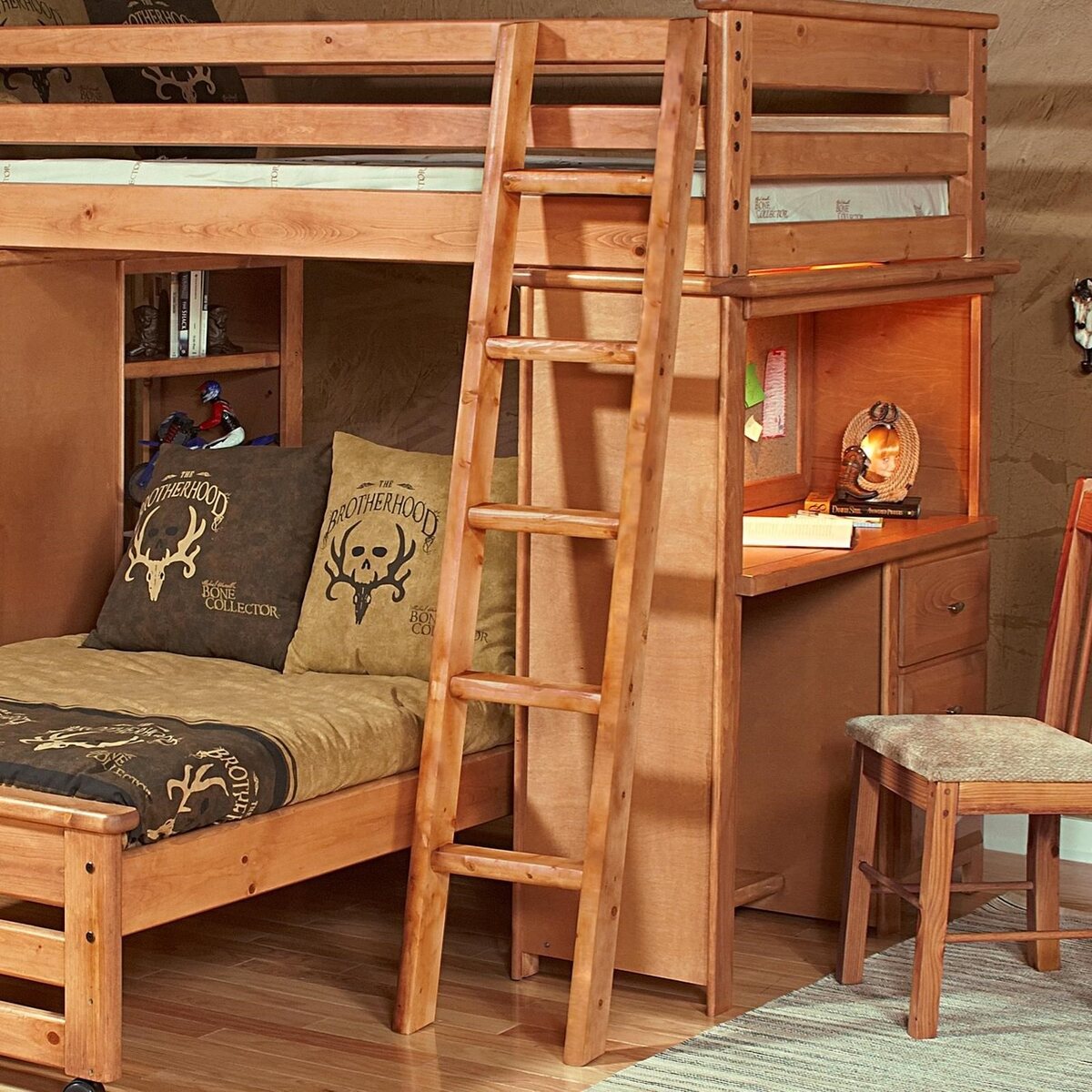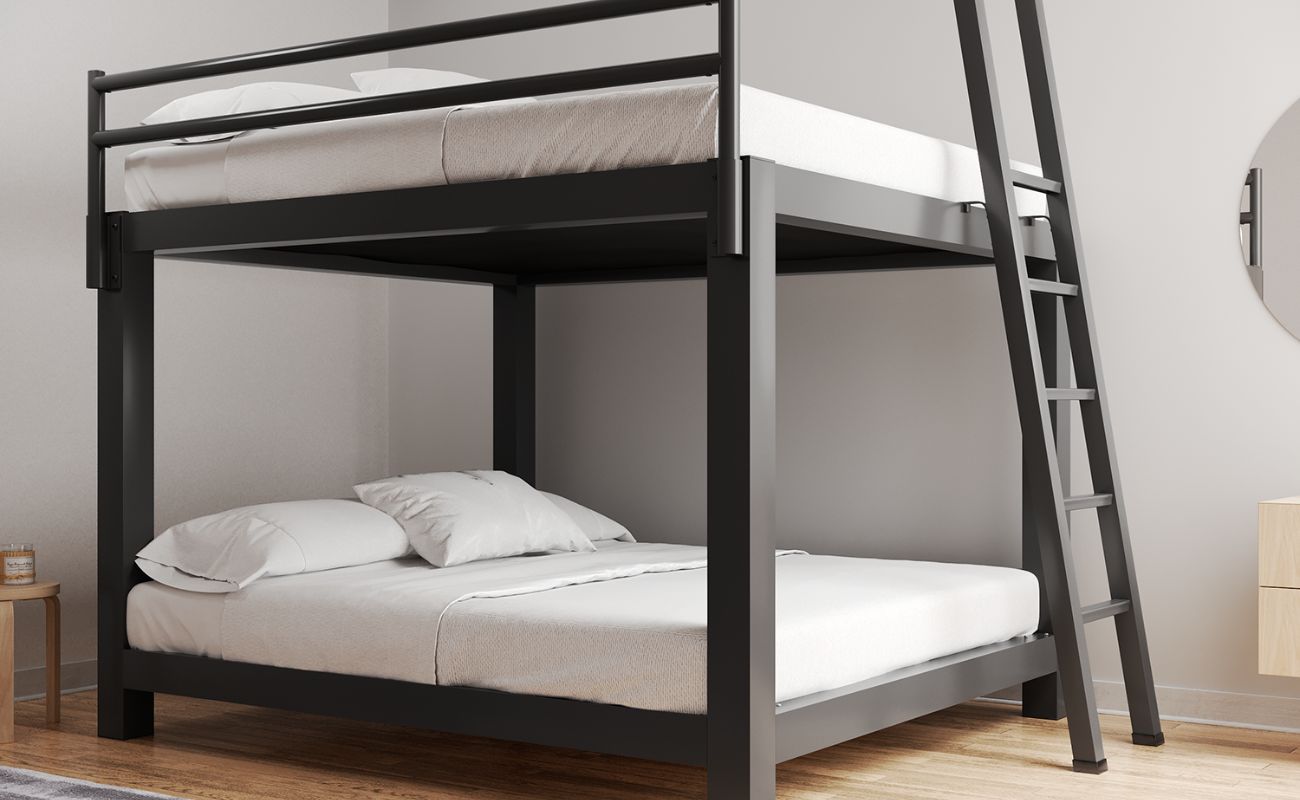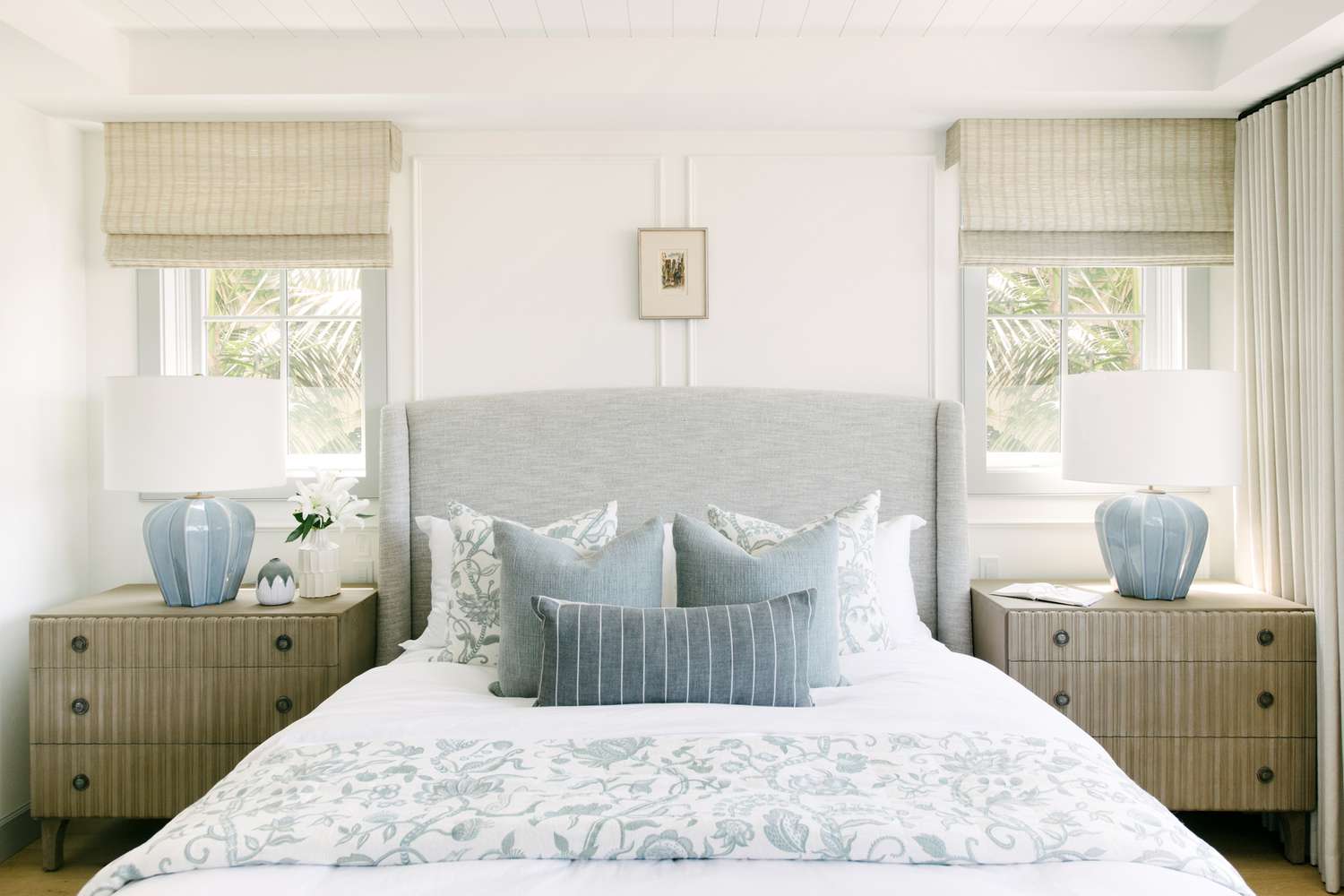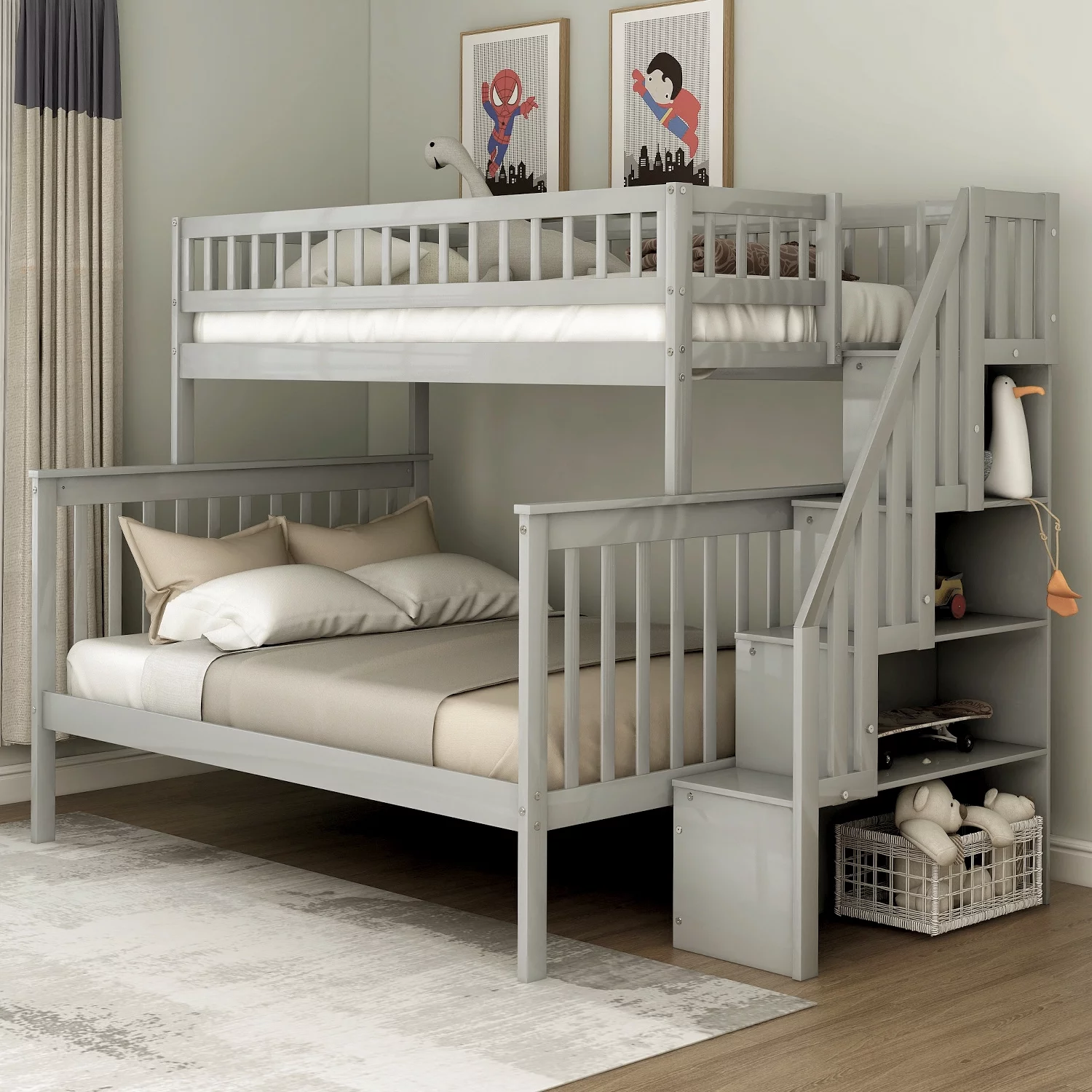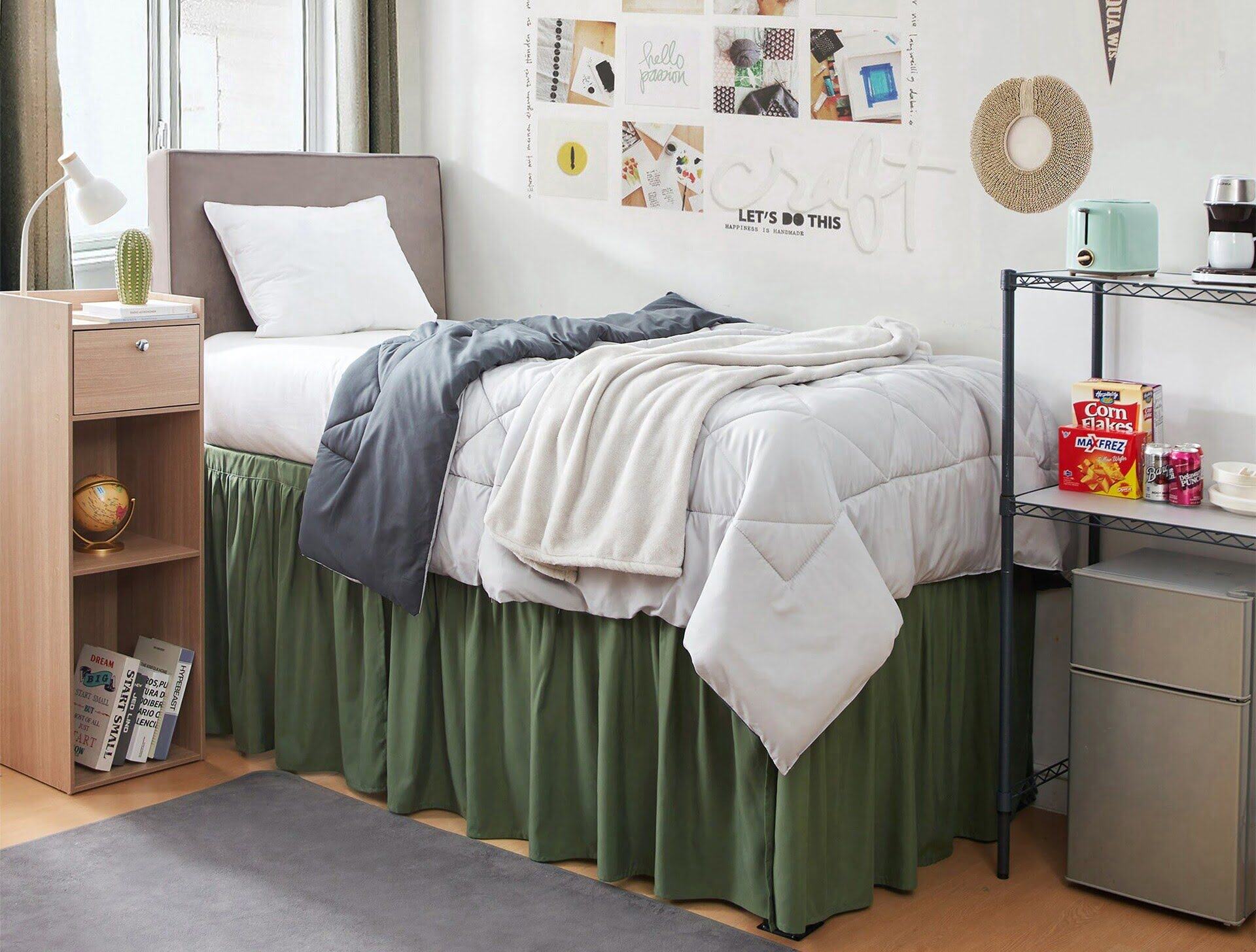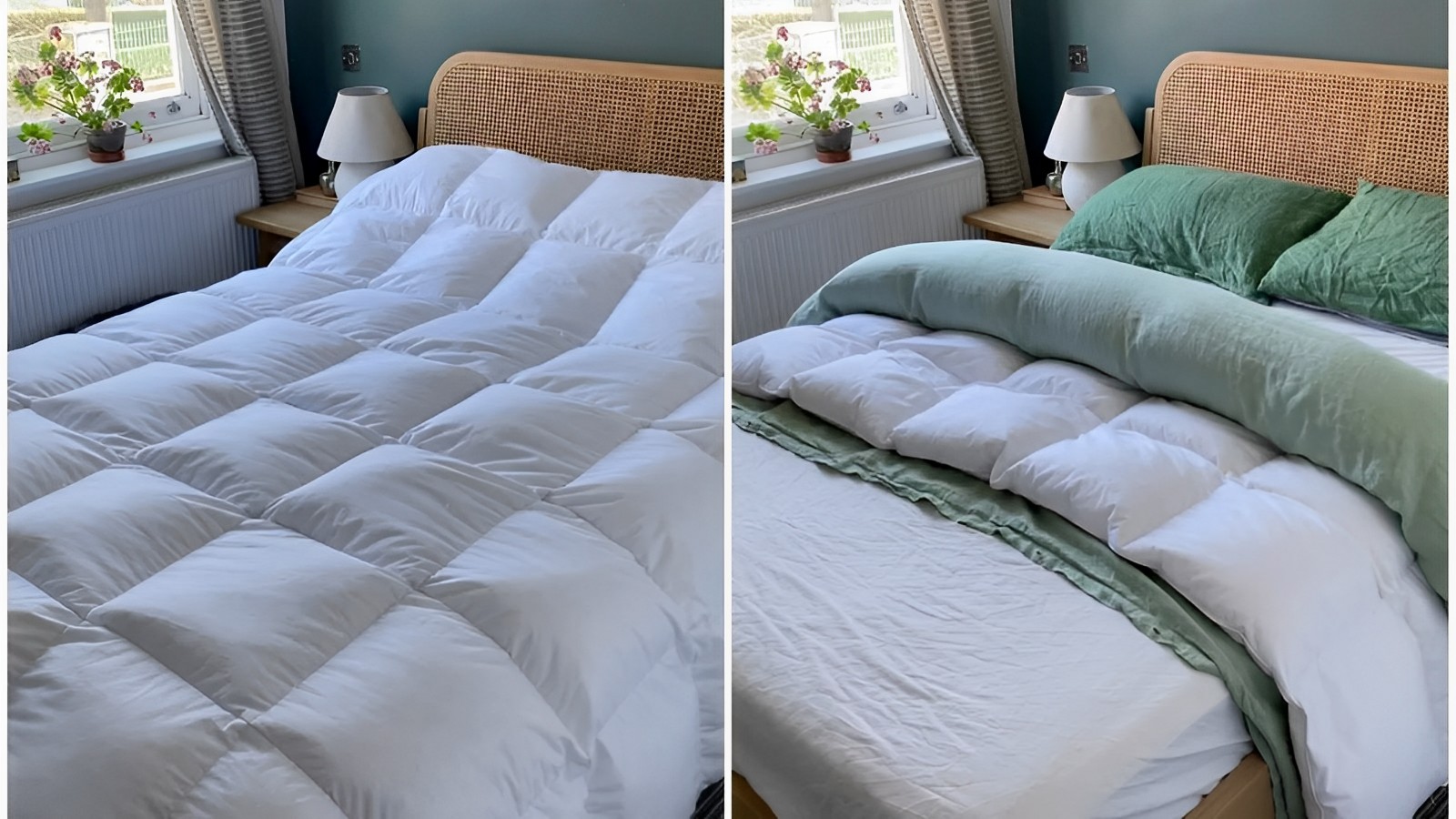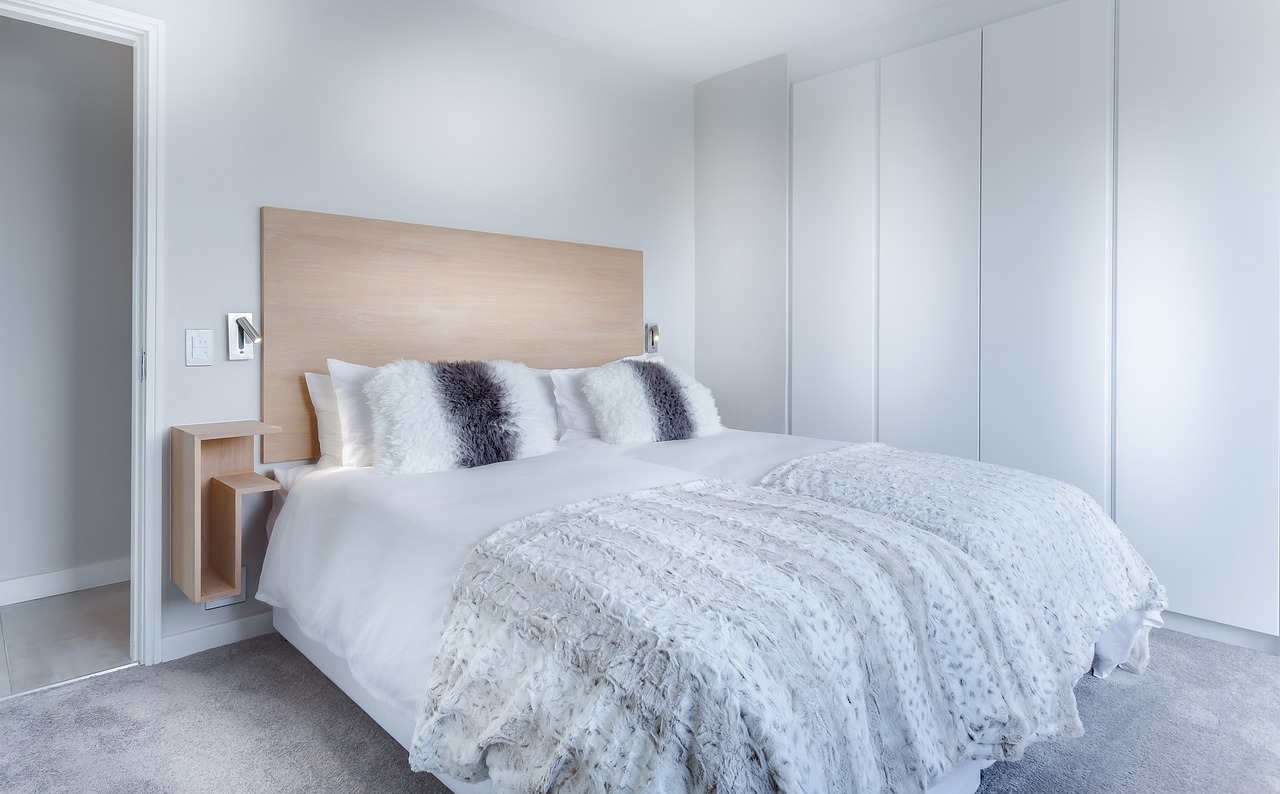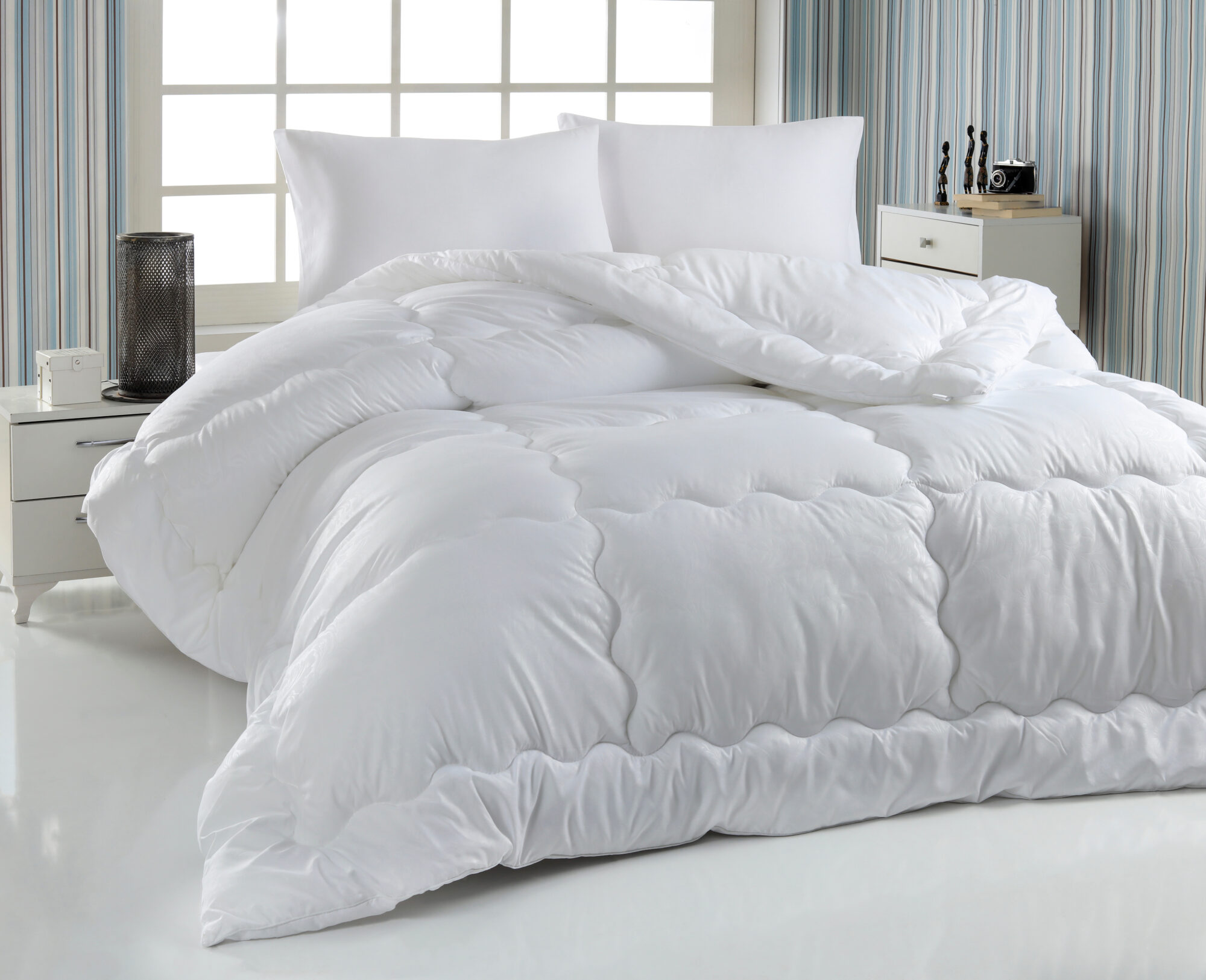Home>Furniture>Bedroom Furniture>How To Make A Bunk Bed
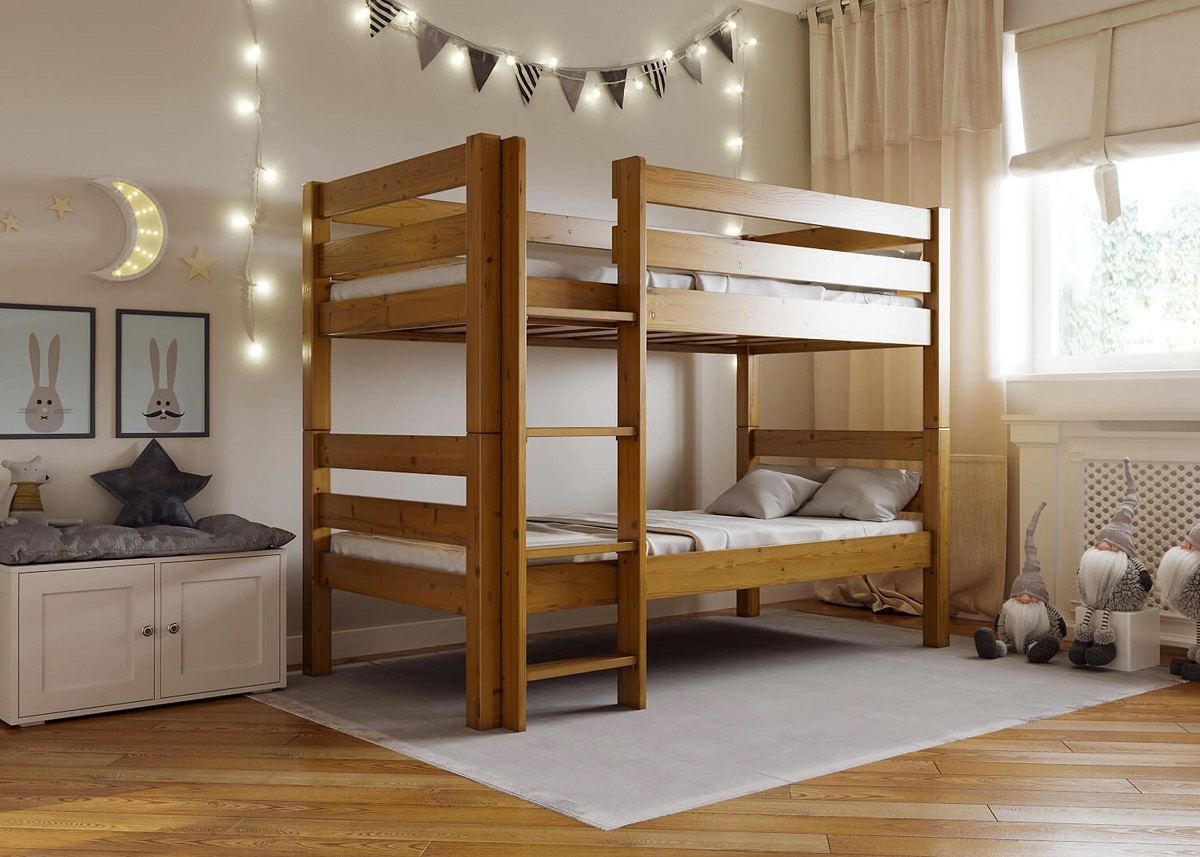

Bedroom Furniture
How To Make A Bunk Bed
Modified: January 6, 2024
Learn how to make a stylish and functional bunk bed for your bedroom with this easy step-by-step guide. Transform your space with our bedroom furniture ideas.
(Many of the links in this article redirect to a specific reviewed product. Your purchase of these products through affiliate links helps to generate commission for Storables.com, at no extra cost. Learn more)
Introduction
Welcome to our comprehensive guide on how to make a bunk bed! Bunk beds are not only functional but can also be a stylish addition to any bedroom or guest room. Whether you have limited space or simply want to create a fun sleeping arrangement for your children, building a bunk bed can be a rewarding project that offers both utility and craftsmanship.
In this article, we will take you through the step-by-step process of building a bunk bed from scratch. We will discuss the materials you’ll need, provide detailed measurements and cutting instructions, and guide you through the assembly process. By following our instructions and tips, you’ll be able to create a sturdy, safe, and aesthetically pleasing bunk bed that will enhance the charm and functionality of your space.
Before we dive into the construction process, it’s important to note that building a bunk bed requires some advanced DIY skills and tools. If you don’t have experience with woodworking or carpentry, it may be best to consult a professional or enroll in a woodworking class before attempting this project. Safety should always be a top priority when working with power tools and constructing furniture.
Now, let’s gather our materials and get started on building the bunk bed of your dreams!
Key Takeaways:
- Create a safe and stylish bunk bed by following step-by-step instructions, prioritizing safety, and personalizing the finish to enhance the charm of your space.
- Prioritize safety, gather materials, measure and cut lumber accurately, and test for sturdiness to build a sturdy, safe, and aesthetically pleasing bunk bed.
Read more: How To Make A Bunk Bed Ladder
Step 1: Gather Materials
Before diving into the construction of your bunk bed, it’s important to gather all the necessary materials. Having everything organized and readily available will save you time and frustration during the building process. Here’s a list of the main materials you’ll need:
- 2×4 lumber: This will be the primary material for building the bed frames and support structure. Be sure to choose high-quality, sturdy lumber that is free from knots or cracks.
- Plywood or MDF (medium-density fiberboard): This will be used for the mattress support and platform. Opt for a thickness of at least ¾ inch for durability.
- Screws: You’ll need a variety of screws in different sizes to secure the various components of the bunk bed. Make sure to choose screws that are appropriate for the thickness of your lumber.
- Wood glue: Using wood glue in addition to screws will provide extra stability and durability for your bunk bed.
- Sandpaper: To ensure a smooth finish, have sandpaper on hand for sanding down rough edges and surfaces.
- Paint or stain: If desired, choose your preferred finish to add color and protect the wood from wear and tear.
- Safety rails: To prevent falls, safety rails will be essential for the upper bunk. You can purchase pre-made safety rails or construct them yourself using the same materials as the bed frame.
- Ladder or steps: Depending on your design preferences, determine whether you’ll need a ladder or steps for accessing the upper bunk. These can be purchased or built from the same materials as the bed frame.
Additionally, make sure you have the necessary tools, such as a saw, drill, screwdriver, measuring tape, and clamps, to complete the project. Having all the materials and tools ready before you start building will ensure a smooth and efficient construction process.
Now that you have gathered all the necessary materials, it’s time to move on to step two: measuring and cutting the lumber.
Step 2: Measure and Cut the Lumber
Now that you have all your materials gathered, it’s time to start measuring and cutting the lumber for your bunk bed. Accurate measurements are crucial for ensuring that all the components fit together properly. Here’s a step-by-step guide:
- Start by measuring the height, width, and length of your mattress. This will serve as the basis for determining the dimensions of your bed frame.
- Next, decide on the overall dimensions of your bunk bed. Consider factors such as ceiling height and available space in the room. Standard bunk bed dimensions are typically 39 inches wide by 75 inches long for a twin-size mattress.
- Using these dimensions, calculate the lengths of the lumber pieces needed for the bed frame, support structure, and other components. You’ll need two long pieces for the sides of each bed frame, two shorter pieces for the head and foot of each bed frame, and additional pieces for support beams and safety rails.
- Mark your measurements on the lumber using a pencil or marker. Double-check your measurements to ensure accuracy.
- Using a saw, carefully cut the lumber to the desired lengths. Take your time and use a smooth, steady motion to create clean, straight cuts.
- After cutting all the pieces, use sandpaper to smooth any rough edges or surfaces.
Remember to wear protective goggles and gloves while cutting the lumber to prevent any injuries. It’s also a good idea to work in a well-ventilated area for better safety and comfort.
Once you have measured and cut all the lumber pieces, you are ready to move on to the next step: building the bottom bed frame.
Step 3: Build the Bottom Bed Frame
With your lumber pieces measured and cut, it’s time to start building the bottom bed frame. The bottom bed frame will serve as the foundation for your bunk bed. Follow these steps to construct it:
- Begin by laying out the two long side pieces parallel to each other on the floor.
- Position the shorter head and foot pieces between the long side pieces, ensuring that they align properly.
- Apply wood glue to the ends of each piece where they will join together for extra stability.
- Using a drill and appropriate screws, attach the pieces together. Make sure to countersink the screws to avoid any protruding parts that could cause discomfort or injuries.
- Double-check that the frame is square by measuring diagonally from corner to corner. The measurements should be equal.
- Repeat these steps to build the second bed frame for the top bunk.
Once the bottom bed frame is complete, you can move on to the next step: constructing the top bed frame.
Remember, safety is paramount when building a bunk bed. Ensure that all joints are secure and that the frame is sturdy before proceeding.
Step 4: Construct the Top Bed Frame
Now that the bottom bed frame is complete, it’s time to move on to constructing the top bed frame for your bunk bed. Follow these steps to build the top bed frame:
- Start by laying out the two long side pieces parallel to each other on the floor, similar to how you did for the bottom bed frame.
- Position the shorter head and foot pieces between the long side pieces, aligning them properly.
- Apply wood glue to the ends of each piece where they will join together.
- Secure the pieces together using a drill and appropriate screws, ensuring that the screws are countersunk to create a smooth surface.
- Check the squareness of the frame by measuring diagonally from corner to corner. The measurements should be equal.
- Once the top bed frame is assembled, place it on top of the bottom bed frame to ensure a proper fit.
- Make any necessary adjustments or trim any excess length to achieve a snug fit.
- Double-check that both bed frames are securely attached to each other to guarantee stability.
By following these steps, you should have a sturdy and secure top bed frame ready to be assembled with the bottom bed frame. Moving forward, we will proceed to the next step: assembling the bunk bed.
Remember to take your time during the construction process and ensure that all the joints are secure before proceeding to the next step.
Read more: How To Buy Bunk Beds
Step 5: Assemble the Bunk Bed
Now that both the bottom and top bed frames are constructed, it’s time to assemble the bunk bed. Follow these steps to put the pieces together:
- Have a helping hand available as you’ll need assistance to lift and position the top bed frame onto the bottom bed frame.
- Ensure that the bottom bed frame is in a secure position and stable.
- Carefully lift the top bed frame and align it with the bottom bed frame, making sure that all corners and edges are properly aligned.
- Have a second person help you hold the top bed frame in place as you attach the two frames together. Use screws to secure the two frames at each corner.
- Double-check that all connections are tight and the bunk bed is securely assembled.
Once the bunk bed is fully assembled, test it for stability by gently shaking it. If there is any wobbling or unsteadiness, reinforce the joints with additional screws and brackets to ensure maximum safety.
Now that your bunk bed is fully assembled, it’s time to move on to the next step: adding safety rails.
Remember, proper assembly is crucial for the structural integrity and safety of the bunk bed. Take your time and ensure that all connections are secure before proceeding.
When building a bunk bed, make sure to use sturdy materials and secure all joints and connections properly to ensure the safety of the bed.
Step 6: Add Safety Rails
Adding safety rails to your bunk bed is essential to prevent accidents and ensure the well-being of those using the top bunk. Follow these steps to install safety rails:
- Measure the length of each side of the top bed frame where the safety rails will be attached.
- Cut pieces of lumber to the measured length, ensuring that they are high enough to provide adequate protection.
- Position the safety rails vertically against the inside edge of the top bed frame.
- Using a drill and appropriate screws, attach the safety rails securely to the bed frame. Make sure to countersink the screws for a smooth surface.
- Repeat the process for the remaining sides of the top bed frame.
- Ensure that the safety rails are firmly attached and cannot be easily dislodged.
- Test the stability of the safety rails by applying pressure to them. They should not move or shake.
Adding safety rails will provide peace of mind, especially for younger children or restless sleepers using the top bunk. It’s important to ensure that the safety rails are securely attached to prevent accidents and falls.
With the safety rails in place, you’re ready to move on to the next step: sanding and finishing the bunk bed.
Remember, safety should always be the top priority when building a bunk bed, and properly installed safety rails are crucial for the well-being of those using the bunk bed.
Step 7: Sand and Finish the Bed
Now that your bunk bed is structurally sound and safe, it’s time to sand and finish the wood surfaces to create a smooth and polished appearance. Follow these steps to achieve a professional finish:
- Start by using sandpaper with a medium grit (around 120) to sand down any rough edges or surfaces on the bunk bed frames. Sand in the direction of the wood grain for the best results.
- Continue sanding with a finer grit sandpaper (around 220) to achieve a smoother finish. This will help remove any remaining imperfections and create a soft-to-the-touch surface.
- Wipe down the bunk bed with a clean cloth to remove any dust or debris from sanding.
- Choose your desired finish for the bed. You can opt for paint, stain, or a clear coat to enhance the natural beauty of the wood.
- If you choose to paint, apply a primer to seal the wood and create a smooth surface for the paint. Once the primer is dry, apply your chosen paint color, allowing each coat to dry before applying the next.
- If you prefer a stained finish, apply the stain using a brush or cloth, following the manufacturer’s instructions. Allow the stain to penetrate the wood, wiping away any excess to achieve your desired color and finish.
- If you opt for a clear coat, choose a polyurethane or varnish suitable for indoor furniture. Apply multiple coats, following the manufacturer’s instructions, to protect the wood and provide a glossy finish.
- Allow the finish to dry completely before moving or using the bunk bed.
By sanding and finishing the bunk bed, you not only enhance its visual appeal but also protect the wood from wear and tear, ensuring its longevity. This step adds the final touches to your DIY project, creating a professional and polished look.
Now that your bunk bed is sanded and finished, it’s time to move on to the next step: attaching the ladder or steps for easy access to the top bunk.
Remember to follow the instructions and safety precautions provided by the manufacturer when working with paint, stain, or clear coat products.
Step 8: Attach Ladder or Steps
Adding a ladder or steps to your bunk bed is essential for safe and convenient access to the top bunk. Follow these steps to attach the ladder or steps:
- Determine the desired location for the ladder or steps on the bunk bed. It is commonly placed at the foot of the bed.
- Measure and mark the appropriate height for the ladder or steps, ensuring they are evenly spaced and easily reachable.
- If using a ladder, position it against the bed frame and mark the areas where it will be attached.
- If using steps, mark the locations where each step will be installed.
- Drill pilot holes at the marked areas to avoid splitting the wood when attaching the ladder or steps.
- Secure the ladder or steps to the bed frame using screws or bolts, depending on the design and material of the ladder or steps.
- Double-check that the ladder or steps are stable, ensuring they can support the weight of those accessing the top bunk.
Having a sturdy ladder or steps ensures a safe and convenient way to access the top bunk. It is important to securely attach them to the bed frame to prevent any accidents or injuries.
With the ladder or steps properly attached, you’re almost finished with your bunk bed project. The final step involves testing the bed for sturdiness and safety.
Remember, safety should always be a priority, and the ladder or steps should be securely attached to the bunk bed to provide a safe means of accessing the top bunk.
Read more: How To Build A Bunk Bed Frame
Step 9: Test for Sturdiness and Safety
Once you’ve completed all the previous steps of building your bunk bed, it’s crucial to perform a thorough test to ensure its sturdiness and safety. This step will give you peace of mind and help prevent any potential accidents. Follow these guidelines to test the bunk bed:
- Apply pressure to the bed frame, both on the top and bottom bunks, to check for any wiggle or instability. If there is any movement, reinforce the joints and connections as needed.
- Test the sturdiness of the ladder or steps by gently applying weight and ensuring they can support the intended user’s weight without any wobbling or instability.
- Examine the safety rails to ensure they are firmly attached and cannot be easily dislodged. Shake them to ensure they are secure and provide adequate protection.
- If the bunk bed includes a mattress support system, test it to ensure it can adequately support the weight of the mattress and those using the bed.
- Check for any sharp edges, splinters, or protruding screws. Use sandpaper to smooth any rough surfaces or cover sharp edges with protective caps.
- Ensure there is enough space between the top bunk and the ceiling to prevent any head injuries. Check that the distance meets safety standards.
- Review the bunk bed’s overall design and safety features. Make any necessary adjustments or additions to ensure maximum safety.
By performing a thorough test for sturdiness and safety, you can address any potential issues before using the bunk bed. This step is essential for the well-being and safety of those who will be using it.
Once you are satisfied with the stability and safety of your bunk bed, it’s time to enjoy the fruit of your labor. Your sturdy and safe bunk bed is now ready to provide a comfortable and stylish sleep solution for your space.
Congratulations on completing your bunk bed building project!
Conclusion
Building a bunk bed from scratch can be a rewarding and fulfilling DIY project. By following the steps outlined in this comprehensive guide, you have learned how to create a sturdy, safe, and aesthetically pleasing bunk bed for your home. From gathering the materials to testing for sturdiness and safety, each step has brought you closer to the accomplishment of your project.
Throughout the process, it’s important to prioritize safety. Always double-check measurements, reinforce joints, and ensure proper stability before using the bunk bed. Additionally, follow safety guidelines such as adding safety rails and attaching a secure ladder or steps for easy accessibility to the top bunk.
Remember that building a bunk bed requires advanced DIY skills and tools. If you are not confident in your abilities, it is advisable to seek professional assistance or enroll in a woodworking class to enhance your knowledge and skills.
Not only does a bunk bed provide a functional and space-saving solution to sleeping arrangements, but it can also add charm and style to your bedroom or guest room. By personalizing the bunk bed with your choice of finishes and accessories, you can create a unique piece that perfectly suits your needs and preferences.
We hope that this guide has empowered you with the knowledge and confidence to tackle your own bunk bed construction project. Remember, patience and attention to detail are key, and the end result will be a bed that not only provides restful nights but also becomes a centerpiece in your space.
Enjoy the process, and have fun building your own bunk bed masterpiece!
Frequently Asked Questions about How To Make A Bunk Bed
Was this page helpful?
At Storables.com, we guarantee accurate and reliable information. Our content, validated by Expert Board Contributors, is crafted following stringent Editorial Policies. We're committed to providing you with well-researched, expert-backed insights for all your informational needs.
